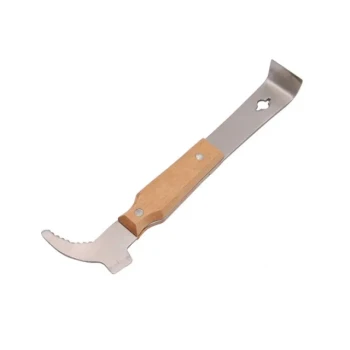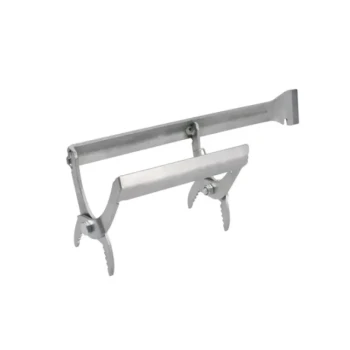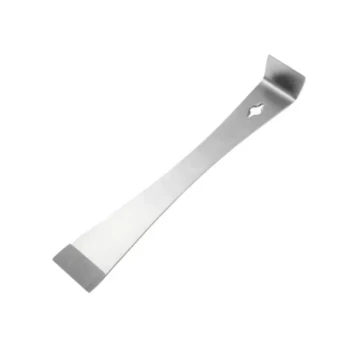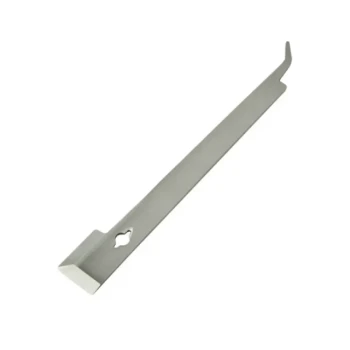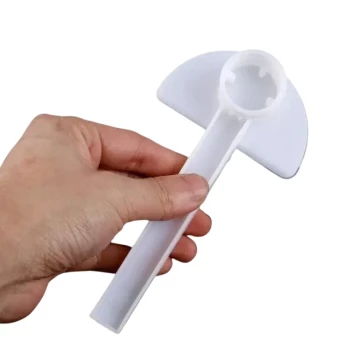At its core, a Dadant beehive is defined by its large, deep brood chamber. Unlike the more common Langstroth hive, a Dadant brood box is designed to hold 11 frames and has a total capacity of approximately 93,000 cells. This design intentionally creates a larger, undivided space for the queen to lay eggs and for the colony to raise its young.
The critical takeaway is not just the dimensions, but the philosophy behind them. The Dadant hive's size promotes a single, expansive brood nest that more closely mimics a wild colony, which has significant consequences for both colony health and the beekeeper's management style.
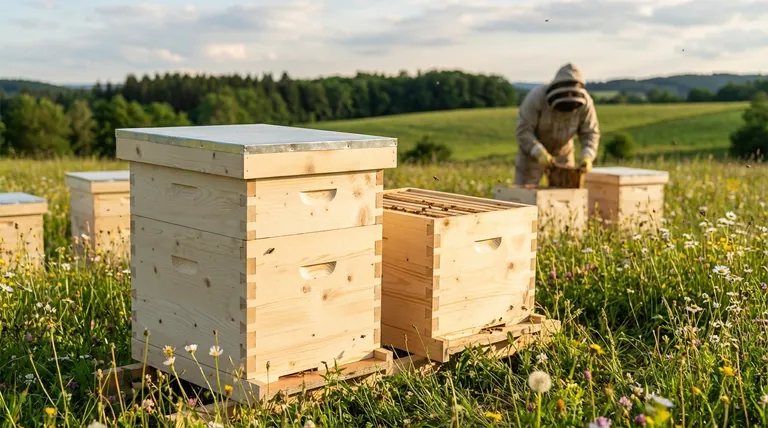
The Defining Feature: A Larger Brood Chamber
The primary difference between a Dadant hive and other modern hives is the size of the brood box, the area where the queen lays her eggs and the colony raises new bees.
Frame Count and Capacity
A standard Dadant brood box holds 11 frames, one more than the 10 frames found in a Langstroth hive.
More importantly, the frames themselves are deeper. This results in a massive increase in capacity, offering roughly 93,000 cells compared to the 61,000 cells in a standard deep Langstroth box.
The Impact on the Queen
This expansive, unbroken area allows a prolific queen to lay eggs in a continuous pattern without interruption. This reduces the chance of her becoming "honey bound," a state where the queen runs out of laying space because bees have filled the brood cells with nectar or pollen.
A larger brood nest directly supports a larger, more populous, and often stronger colony.
Comparing Dadant to the Langstroth Standard
To truly understand the Dadant's size, it's best to compare it to the Langstroth, which is the de facto standard in many parts of the world.
The Single Brood Box Philosophy
The Dadant was designed with the intention of housing the entire colony's brood nest in a single, large box.
Langstroth beekeepers, by contrast, frequently use two deep brood boxes stacked on top of each other to provide enough space for the queen. This creates a split-level nest that the beekeeper must manage across two separate pieces of equipment.
Honey Super Dimensions
While the brood chamber is deep, the honey supers placed on top are shallower. Dadant super frames are typically 6¼ inches tall.
This design makes the honey-filled boxes lighter and easier to handle than the extremely heavy brood box.
Understanding the Trade-offs of a Larger Hive
The Dadant's size is its greatest strength and its most significant weakness. The choice to use one is a matter of clear trade-offs.
Advantage: A More Natural Colony Structure
The large, unified brood nest is closer to how bee colonies organize themselves in nature. This can lead to robust colonies that build up quickly in the spring and may be less prone to swarming.
Advantage: Simplified Brood Management
With the brood nest contained in one box, inspections can be simpler. The beekeeper does not need to split, lift, and inspect two separate brood chambers to assess the health of the queen and colony.
Disadvantage: Extreme Weight
This is the most significant drawback. A full 11-frame Dadant brood box, laden with bees, brood, pollen, and honey, can be exceptionally heavy. Lifting one for inspections or hive moves is often a two-person job.
Disadvantage: Equipment Compatibility
In regions dominated by the Langstroth standard, finding Dadant-sized equipment, frames, and foundation can be more difficult and sometimes more expensive. Interchanging equipment with other beekeepers is often not possible.
Is the Dadant Hive Right for You?
Choosing a hive system is a foundational decision that depends entirely on your goals and physical abilities.
- If your primary focus is a "hands-off" approach to brood management: The Dadant's single, large brood box is designed to give the queen ample space, potentially reducing the need for interventions like reversing hive bodies.
- If your primary focus is physical ease of use and modularity: The Langstroth system's smaller, lighter components are far easier to lift and manipulate individually.
- If your primary focus is equipment availability and community support: The Langstroth is the dominant standard in North America, making it easier to find gear, buy bees, and share knowledge with local keepers.
Ultimately, choosing a hive size is about aligning the equipment with your beekeeping philosophy and physical capabilities.
Summary Table:
| Feature | Dadant Hive | Standard Langstroth Hive |
|---|---|---|
| Brood Box Frames | 11 frames | 10 frames |
| Brood Cell Capacity | ~93,000 cells | ~61,000 cells |
| Brood Nest Philosophy | Single, large box | Often two stacked boxes |
| Key Advantage | Simplified brood management | Lighter, modular components |
| Key Disadvantage | Extremely heavy when full | Requires more brood management |
Ready to choose the right hive for your apiary?
Whether you manage a large commercial operation or are a distributor stocking up on equipment, the right hive is key to your success. HONESTBEE supplies durable, high-quality beekeeping supplies and equipment to commercial apiaries and distributors through our wholesale-focused operations.
Let us help you equip your beekeeping business for maximum productivity. Contact HONESTBEE today to discuss your wholesale needs!
Visual Guide
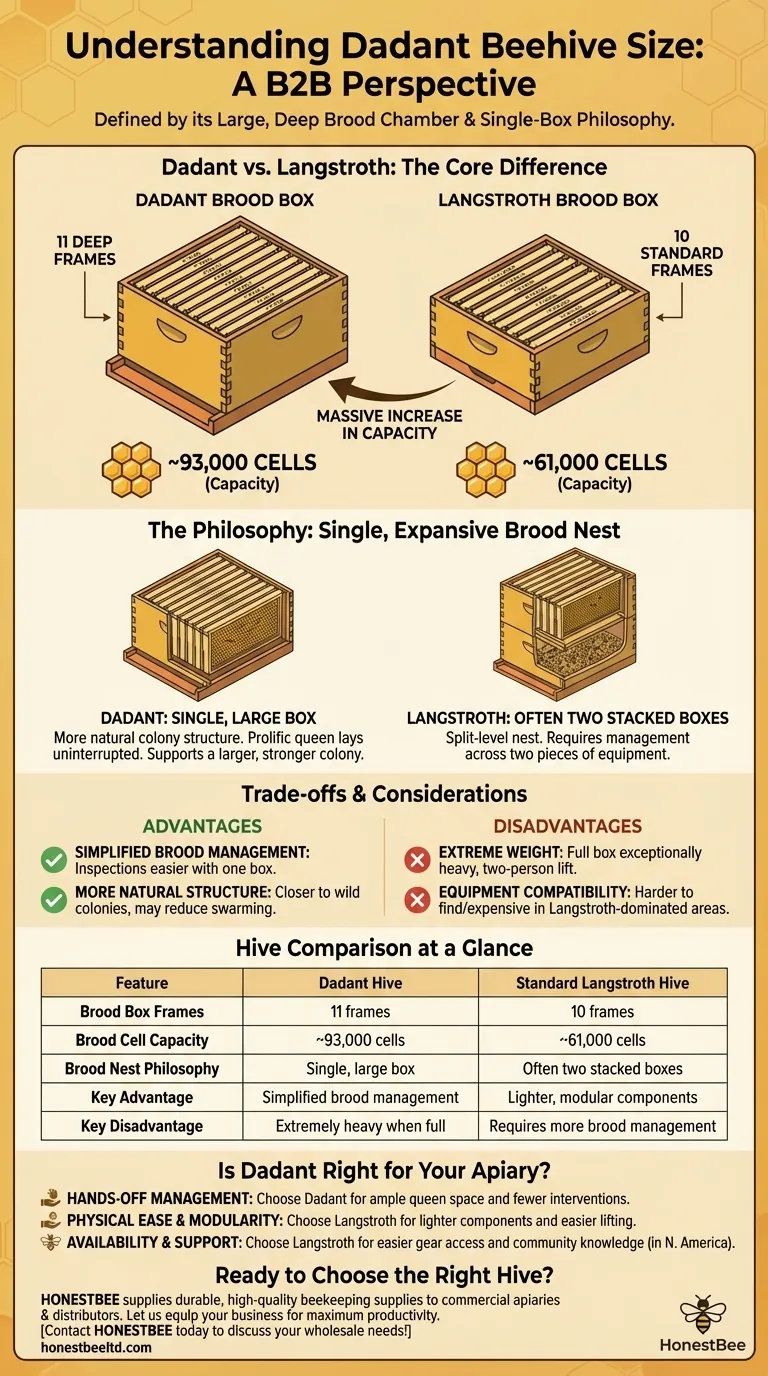
Related Products
- Wholesales Dadant Size Wooden Bee Hives for Beekeeping
- HONESTBEE Professional Multi-Functional Hive Tool with Ergonomic Wood Handle
- HONESTBEE Professional Long Handled Hive Tool with Precision Cutting Blade
- HONESTBEE Advanced Ergonomic Stainless Steel Hive Tool for Beekeeping
- Multi-Function Plier-Style Frame Grip Hive Tool
People Also Ask
- Why were wooden hives traditionally preferred? For Natural Beekeeping Aligned with Bee Biology
- What types of products are available for beekeeping needs? Essential Equipment for Apiaries & Distributors
- What should you do if you find an ant nest near your beehive? Essential Strategies for Hive Protection
- What is the best place to keep bees? Find the Perfect Apiary Site for Your Hives
- What are the essential pieces of equipment for most beekeepers? Get Started with the Right Gear

